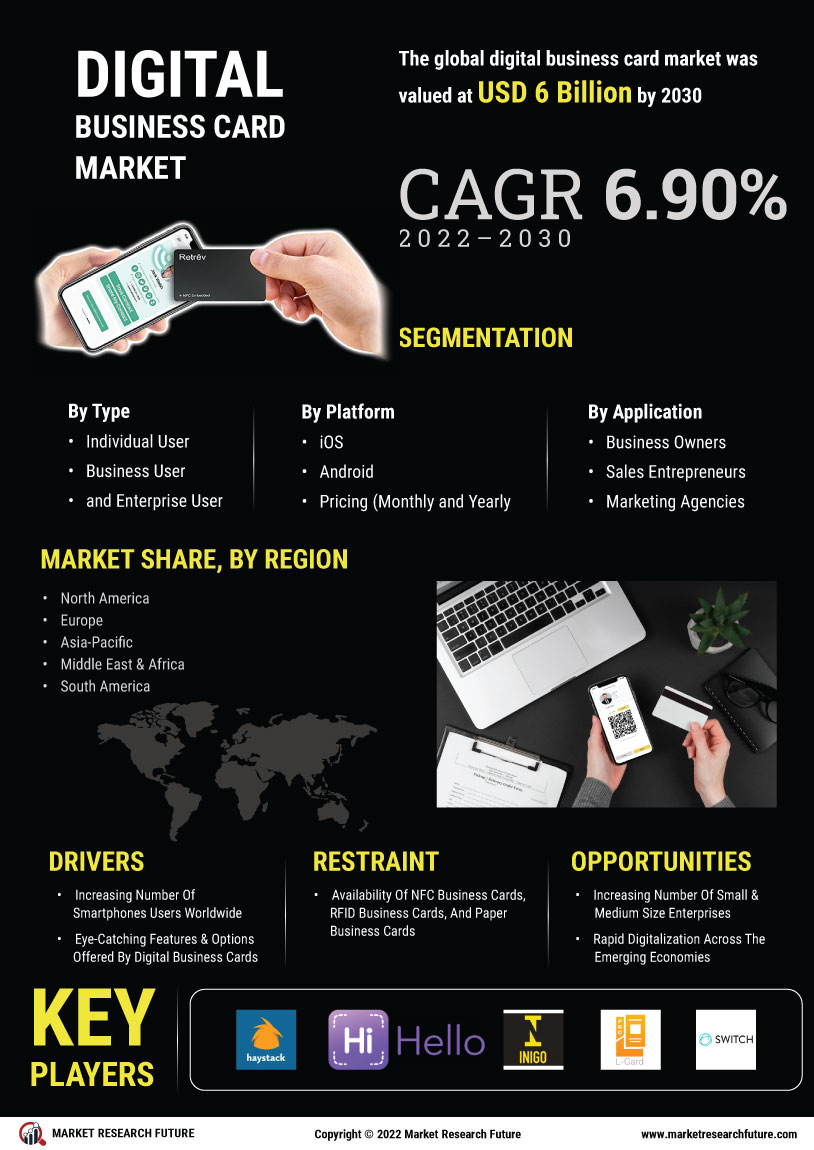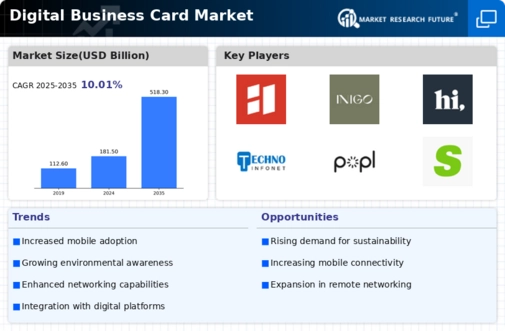Digital Business Card Market Summary
As per Market Research Future Analysis, the Digital Business Card market is poised for significant growth, projected to expand from USD 181.46 billion in 2024 to USD 518.35 billion by 2035, reflecting a CAGR of 10.01% during the forecast period. The market was valued at USD 181.46 billion in 2024. Key drivers include environmental sustainability, convenience, cost-effectiveness, and enhanced functionality through mobile technology and CRM integration. The enterprise user segment led the market in 2022, while the Android platform dominated due to its larger user base. North America held the largest market share at 45.80% in 2022, with the U.S. being the most significant contributor.
Key Market Trends & Highlights
The Digital Business Card market is experiencing transformative trends driven by technology and user preferences.
- Mobile technology is enhancing accessibility and sharing capabilities, making digital cards easily distributable via smartphones.
- The enterprise user segment dominated the market in 2022, highlighting the need for efficient contact management.
- The Android platform led the market in 2022, benefiting from a larger global user base compared to iOS.
- The yearly pricing segment is projected to be the fastest-growing, offering premium features and services.
Market Size & Forecast
| 2024 Market Size | USD 181.46 Billion |
| 2035 Market Size | USD 518.35 Billion |
| CAGR | 10.01% |
Major Players
Key players include Haystack, Inigo, Adobe, HiHello Inc., Techno Infonet, Popl, SnapDat TM Networks, Inc., Switchit, Com, Knowee, L-Card, Lulu System, Inc., VistinKard.




















